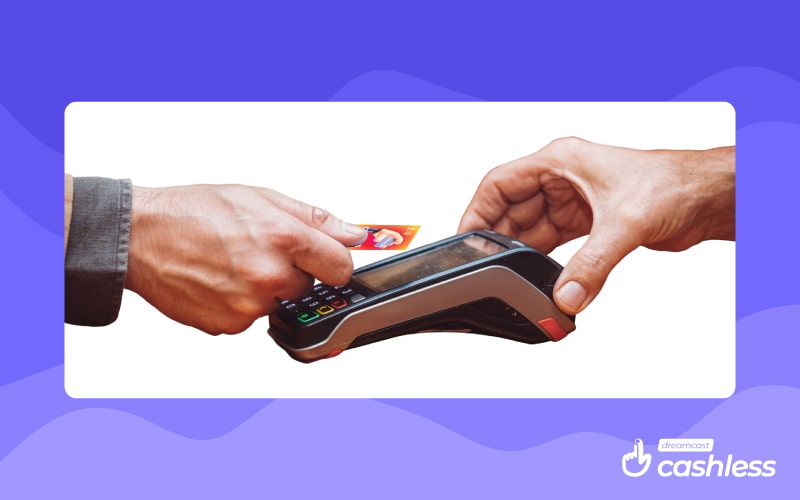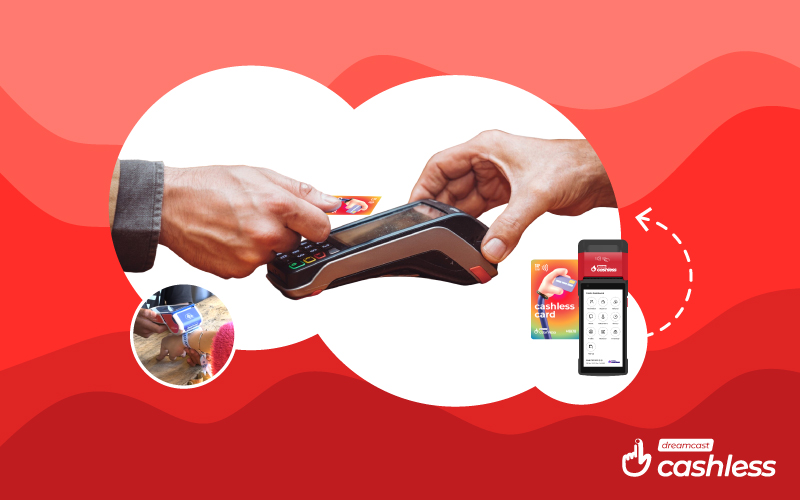Businesses are constantly seeking innovative ways to streamline operations and enhance customer experiences. One such innovation that has gained adoption is the Point of Sale (POS) cashless system. By enabling transactions without the need for physical currency, cashless POS systems offer numerous benefits to both merchants and consumers. In this comprehensive guide, we’ll delve into how POS cashless systems work, exploring their features, advantages, and future prospects.
What is a POS Cashless System and How It Works
A POS cashless system, also known as a Point of Sale cashless system, refers to a payment processing system used by businesses to accept transactions without the need for physical cash. They use electronic payment methods such as mobile wallets, or contactless payments to complete their purchases.

Here’s how a POS cashless system typically works:
Transaction Initiation: The customer selects their items for purchase and proceeds to the checkout counter.
Payment Method Selection: At the point of sale, the customer informs the cashier or interacts with a self-service terminal to indicate their preferred payment method.
Transaction Processing: The POS terminal initiates the transaction by entering the purchase amount into the system. If the customer is using a card, they may insert the card into a chip reader, swipe it through a magnetic stripe reader, or tap it on a contactless-enabled terminal. For mobile wallets, the customer may hold their smartphone or wearable device near a contactless reader to transmit payment information.
Authorization: The POS system securely transmits the transaction details to the payment processor or acquiring bank for authorization. The processor verifies the customer’s payment information, checks for available funds. Also, communicates the approval or decline status back to the POS system in real-time.
Transaction Completion: Upon receiving authorization, the POS system completes the transaction, deducting the purchase amount from the customer’s account or credit line. The customer receives a receipt confirming the transaction, either in digital or printed form.
Settlement and Reporting: At the end of the business day, the POS system settles all approved transactions with the payment processor. Detailed transaction records are generated, providing valuable insights into sales performance, inventory levels, and customer behavior.
Learn More: NFC-Enabled POS Machines are Changing the Event Industry
Features and Components
Here are the features and components you need to know about the POS system:
Payment Terminals: Modern POS systems include versatile payment terminals capable of accepting various payment methods, including Near Field Communication (NFC) payments, and QR code-based transactions.
Integration with Payment Processors: POS cashless systems seamlessly integrate with payment processors and gateways to facilitate real-time authorization and settlement of transactions. This integration ensures secure handling of sensitive payment data and enables swift fund transfers between merchants and acquiring banks.
Inventory Management: Many POS systems incorporate robust inventory management functionalities, allowing businesses to track stock levels, monitor product sales, and automate reordering processes. This integration streamlines inventory operations and helps businesses optimize stock levels to meet customer demand efficiently.
Reporting and Analytics: Advanced POS cashless systems offer comprehensive reporting and analytics tools that provide valuable insights into sales performance, customer behavior, and revenue trends. Merchants can leverage these analytics to make data-driven decisions, identify growth opportunities, and refine their marketing strategies.
Customer Relationship Management (CRM): Some POS systems include built-in CRM features, enabling businesses to capture customer information, track purchase histories, and engage in targeted marketing campaigns. By fostering stronger customer relationships, businesses can drive repeat sales and enhance customer loyalty.
Benefits and Advantages of POS Cashless Systems

Let’s delve deeper into the advantages of using POS cashless systems to achieve efficiency:
1. Improved Efficiency
Faster Transactions: Cashless payments typically take less time to process compared to cash transactions. With cashless systems, customers can simply tap their cards or smartphones, or insert their chip cards, significantly reducing checkout times. This enhanced efficiency can lead to shorter queues, reduced waiting times, and improved overall customer satisfaction.
Streamlined Operations: Cashless transactions eliminate the need for manual cash handling, counting, and reconciliation, freeing up staff time to focus on other aspects of customer service. Moreover, POS systems with integrated inventory management capabilities can automate stock replenishment processes. This ensures that products are always available for purchase.
Real-Time Reporting: POS cashless systems provide real-time insights into sales performance, inventory levels, and customer behavior. Merchants can access detailed reports and analytics dashboards, enabling them to make informed decisions on pricing, promotions, and product offerings. This data-driven approach enhances operational efficiency and supports strategic business growth.
2. Enhanced Security
Reduced Risk of Theft and Fraud: Cashless transactions minimize the risk of theft and fraud associated with cash handling. With digital payments, there is no physical cash on-site, eliminating the temptation for theft by employees or external parties. Additionally, advanced security features such as encryption, tokenization, and biometric authentication help safeguard sensitive payment information from unauthorized access or interception.
Secure Transactions: POS cashless systems use encrypted communication channels and secure authentication protocols to ensure the confidentiality and integrity of transaction data. This secure infrastructure prevents unauthorized interception or tampering of payment information, providing peace of mind to both merchants and customers.

3. Increased Sales Opportunities
Expanded Customer Base: By accepting a variety of digital payment methods, businesses can cater to a broader range of customers who prefer the convenience and security of cashless transactions. This inclusive approach attracts new customers and encourages repeat business, ultimately driving sales growth.
Upselling and Cross-Selling: POS cashless systems enable businesses to implement upselling and cross-selling strategies more effectively. Through targeted promotions, personalized recommendations, and loyalty programs, merchants can encourage customers to purchase additional products or upgrade their orders. Thereby, increasing average transaction values and maximizing revenue.
4. Better Recordkeeping
Automated Reporting: POS cashless systems generate detailed electronic records of transactions, eliminating the need for manual recordkeeping and paper-based receipts. These automated reports streamline accounting processes, facilitate tax reporting, and provide a comprehensive audit trail for financial reconciliation.
Data Analysis: The records captured by POS cashless systems can be analyzed to gain valuable insights into customer preferences, purchasing patterns, and product performance. Merchants can leverage this data to optimize inventory management, tailor marketing campaigns, and identify opportunities for business growth.
Learn More: How RFID Wristbands Exactly Work (Applications & Examples)
Future Trends and Opportunities
The landscape of POS cashless systems continues to evolve, driven by advancements in technology, changes in consumer behavior, and regulatory developments. Some emerging trends and opportunities in this space include:
Contactless Payments: The adoption of contactless payment methods, such as NFC-enabled cards and mobile wallets, is expected to accelerate, driven by consumer demand for safer and more hygienic payment options.
Integration with E-commerce Platforms: POS cashless systems are increasingly integrating with e-commerce platforms to offer omnichannel payment solutions, allowing businesses to seamlessly manage transactions across physical and online channels.
Personalized Experiences: AI-powered analytics and algorithms will enable POS systems to deliver personalized shopping experiences. By analyzing customer data and purchase histories, POS systems can provide tailored product recommendations, promotions, and pricing strategies.
Learn more: How Cashless Payments Are the Future of Events and Festivals
Final Words
POS cashless systems offer a myriad of benefits to businesses and consumers, ranging from improved efficiency and security to increased sales opportunities. By embracing digital cashless payments, businesses can position themselves for success in an increasingly cashless economy.






